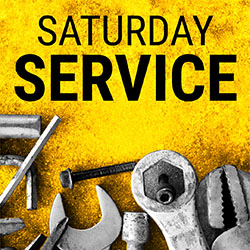Most Cat dozer operators learned their skills in their teens or twenties, but a few got an early start when they were youngsters. If they were lucky on Christmas day, they may have found a shiny new Caterpillar D4 pedal dozer or, if they were really blessed, a six volt electric-powered dozer under the tree.
Around 1950, the New London Metal Processing Corporation of New London, CT, introduced the first pedal powered kid’s ride-on bulldozer. Other companies built pedal cards, trucks, tractors, planes, boats, etc. many years prior to the dozer, but this was a whole new concept for future operators to get a “hands-on” experience on a “real” Cat! It was also a feather in the cap for Caterpillar Tractor to instill the Cat name into the younger generation and another sign of ingenious marketing to make the Cat name a standard of the industry.
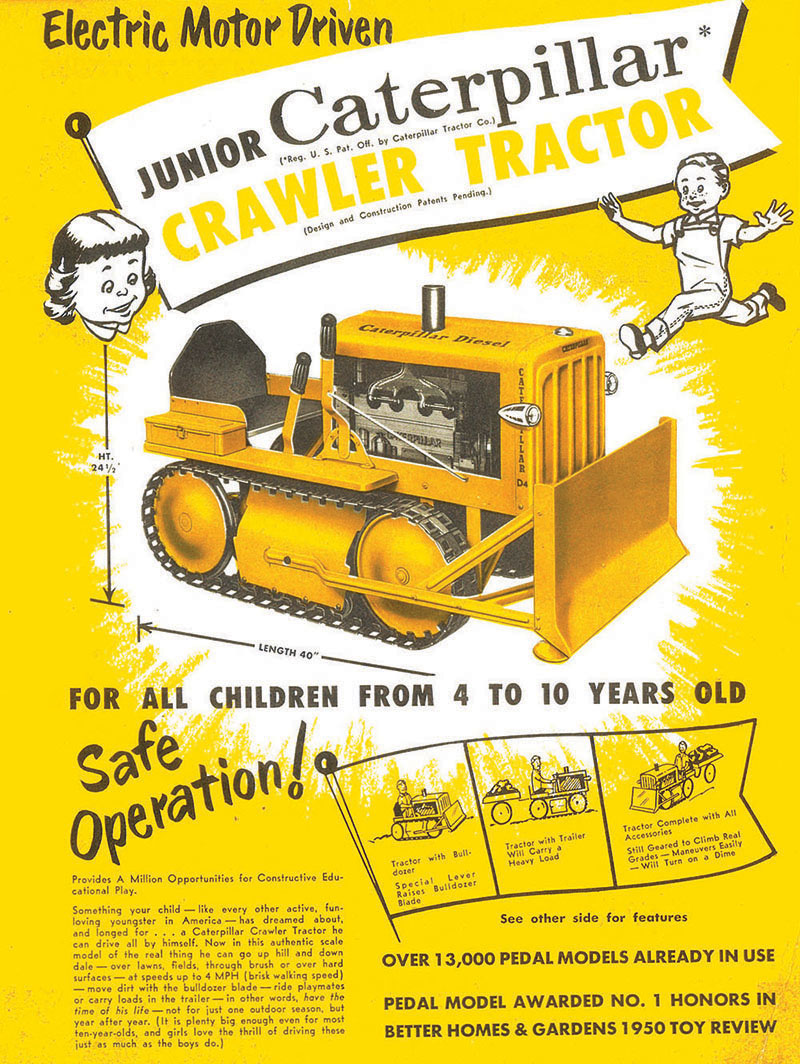
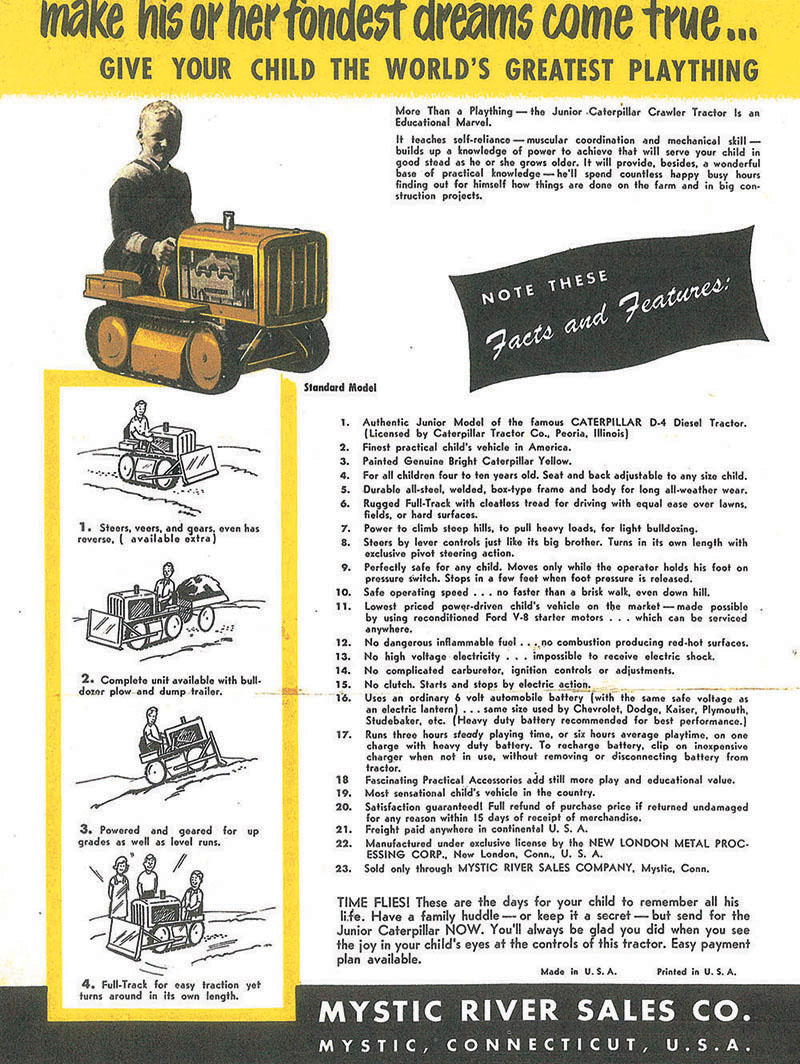
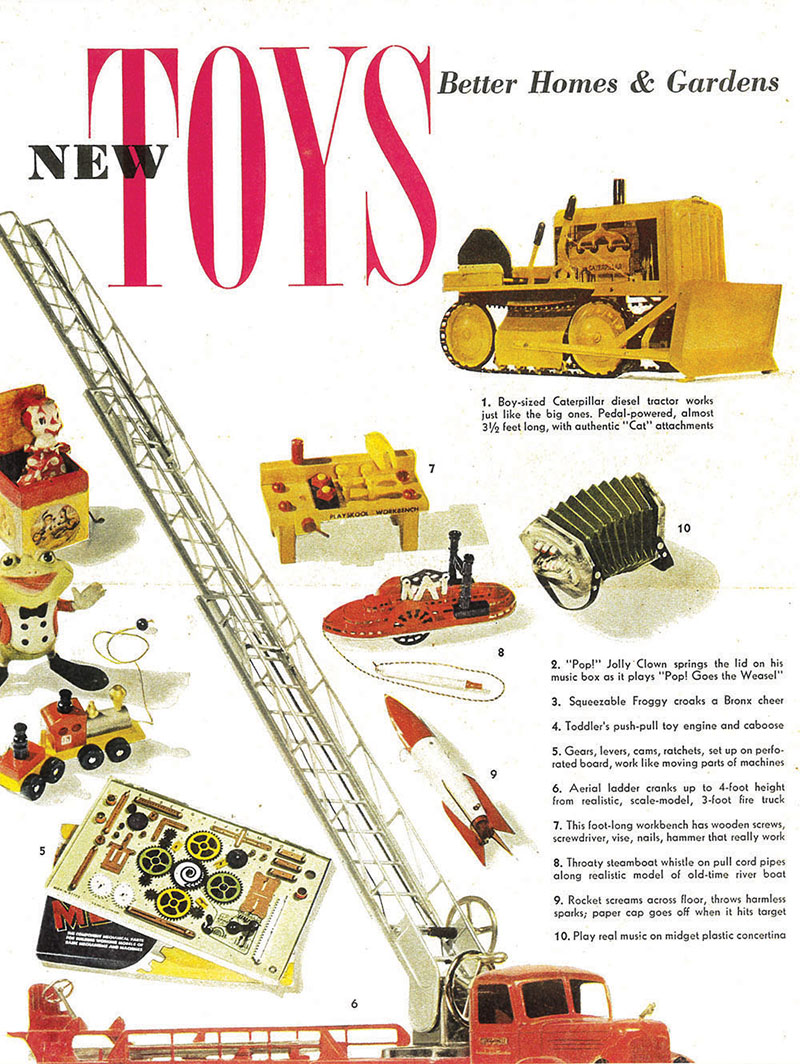
The toy had to be built tough-Cat dozer tough. Heavy grade steel construction was used throughout-right down to the blade and tracks. Each track assembly consisted of 43 interfolded flat pads. Since the model was to be marketed to children aged four to ten years old, the back of the seat could be slid front to back in three different positions to accommodate the size of the child. Tool boxes with latching covers were mounted on each side of the seat for his tools and maybe a gumball or two. Caterpillar make and model identification and engine detail on each side were stenciled over a durable finish of lead-based enamel paint.
Steering was accomplished by pulling one of the two steering levers, setting a dish-shaped pad in the dirt and raising that side of the door off the ground. As the child continued to the pedal, propelling the other track, the dozer would pivot on the dish-shaped pad, allowing it to simulate the turning of a real dozer. The blade was raised and lowered by a handle mounted on the right-hand side. Dish shaped pad like the ones used for the steering were welded on the lower back side of the blade preventing a “hard dig” to the material being pushed.
Soon after the pedal dozer hit the market, manufactured under exclusive license by New London Metal Processing Corp., the first production Caterpillar electric child’s dozer was built. They were sold only through Mystic River Sales Company in the nearby town of Mystic, CT.
A reconditioned six volt Ford starter motor, a reduction drive belt and chain, control switch, and a six volt automotive battery were mounted on a tray under the hood. The drive motor was mounted under the seat. It was also equipped with six volt headlights on the upper front sided.
With a good battery, it was designed to run steady for three hours and, during normal play usage, up to six hours. It had a speed of approximately four miles per hour. They cam with a 15-day money back guarantee. Shipping was paid anywhere in the U.S.
The dozer is 40 inches long, 21 ¼ inches wide and 24 ½ inches high. The pedal dozer weighed 58 pounds. The electric dozer weighs approximately 25 pounds more due to the motor, wiring, etc. without a six volt battery. Both versions could be ordered as a crawler only or with a bulldozer blade and a two-wheel trailer. The pedal model was awarded No. 1 honors in the Better Homes and Gardens 1950 toy review.
There were rumors that they built a gasoline powered crawler and I’m sure some workshop wizards back in the day came up with a few. It’s possible that New London Metal Processing Co. did experiment with the gas engine idea but no proven production models ever hit the market.
It is unknown how many of both the pedal and electric crawlers were built, but, at the printing time of the sales sheet for the electric unit, over 13,000 of the pedal unit were in use.
Other unanswered questions:
-
What was the cost of each of the crawlers?
-
Other than direct purchase from the manufacturer, where could you purchase them: J.C. Penney, Western Auto, Cat dealers?
-
Also, when were they introduced and when was production ended?
-
How many readers of this newsletter were lucky enough to find one of these under a Christmas tree or at a birthday party back in the 1950s or how many have one in the family now?
Please share your memories with us. We would love to hear from you!
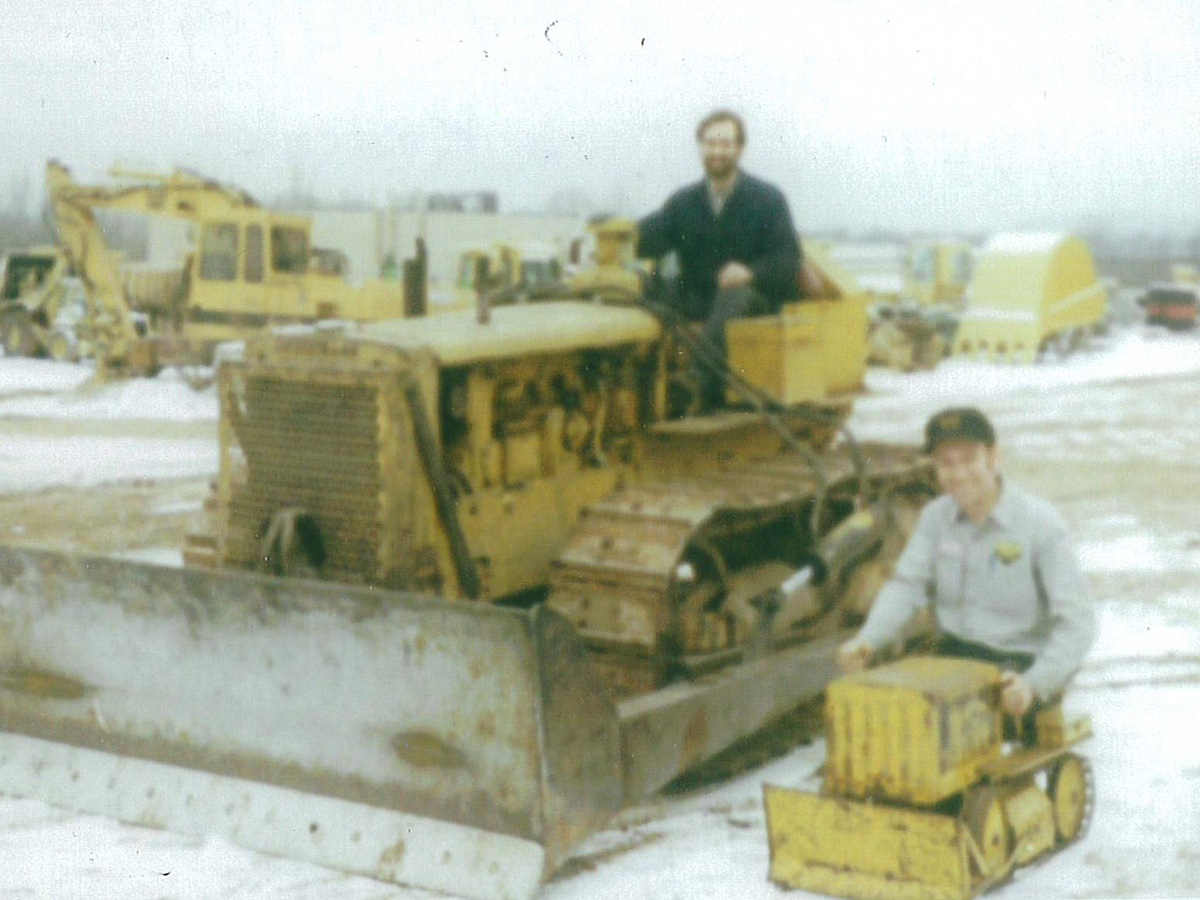
Big Cat D-4 7U15930 - 1951 with Steve Kosenko & Cat Pedal Dozer with Tom Trenka
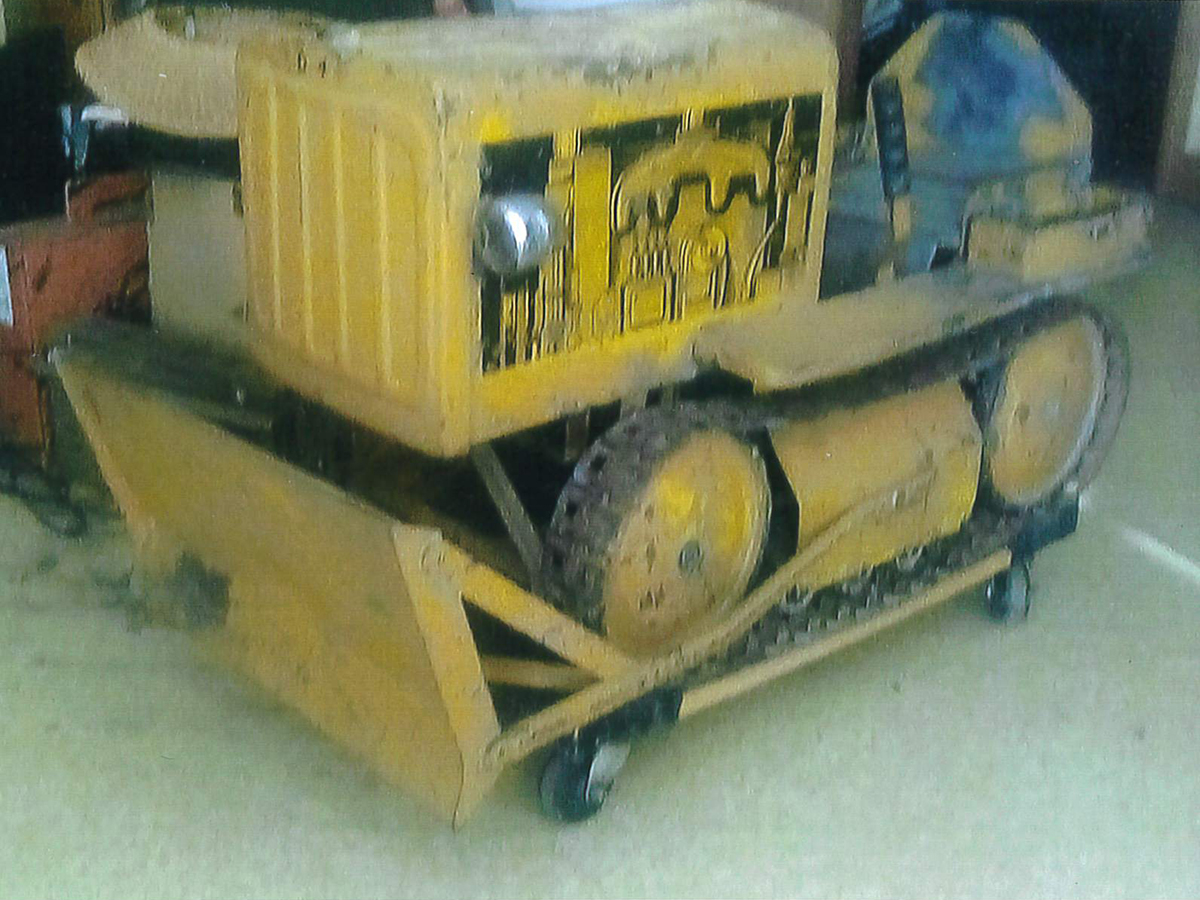
Mystic River Sales 6-Volt Electric Dozer
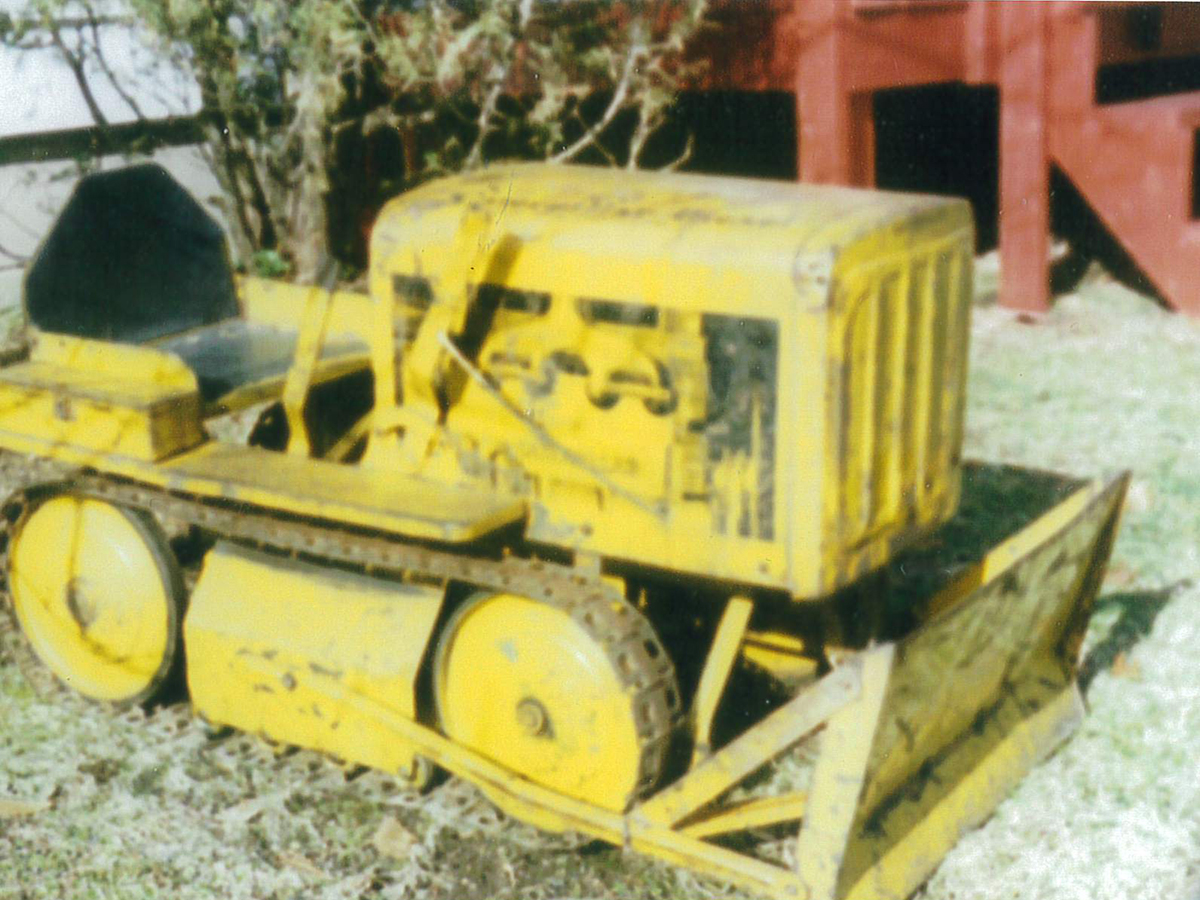
New London Metal Processing Corp. Pedal Dozer
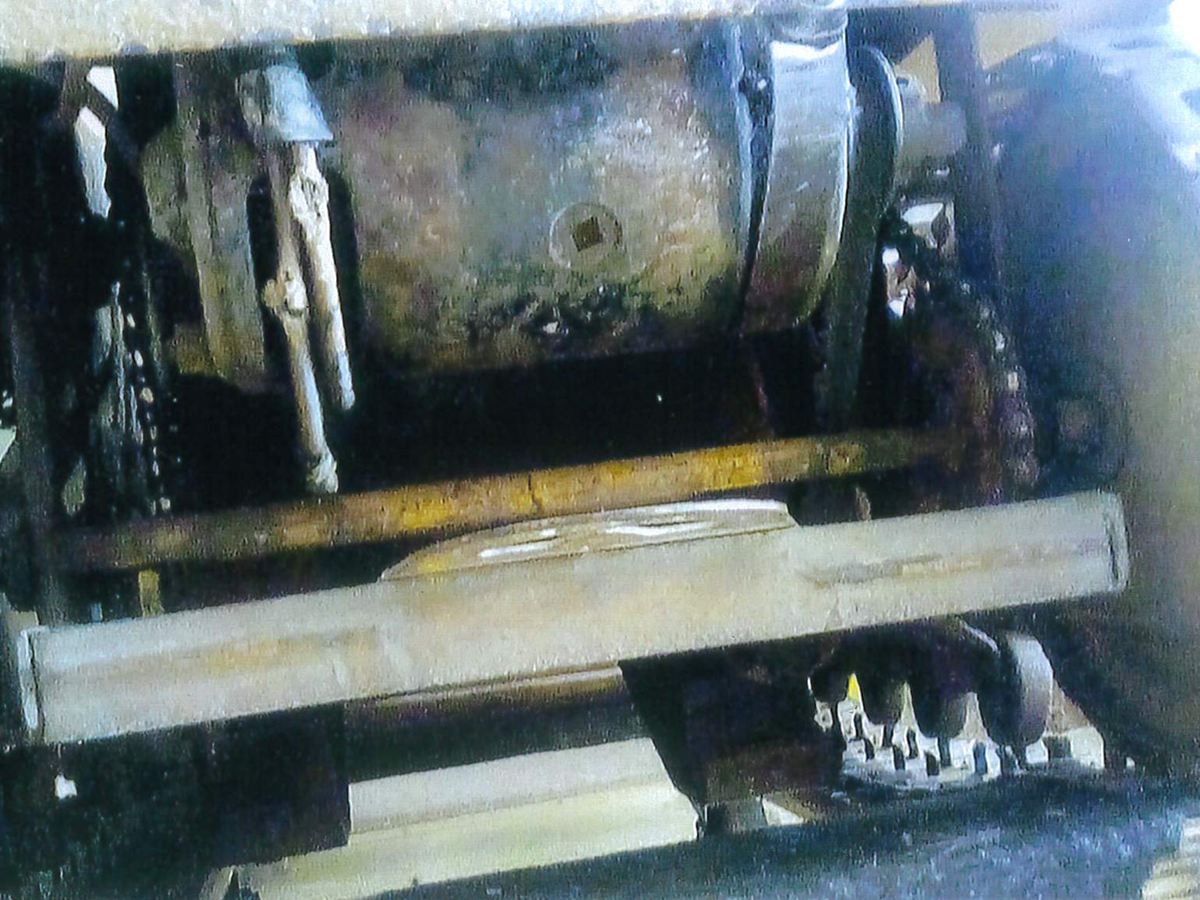
6-Volt Starter Motor, Chain & Belt Drive


